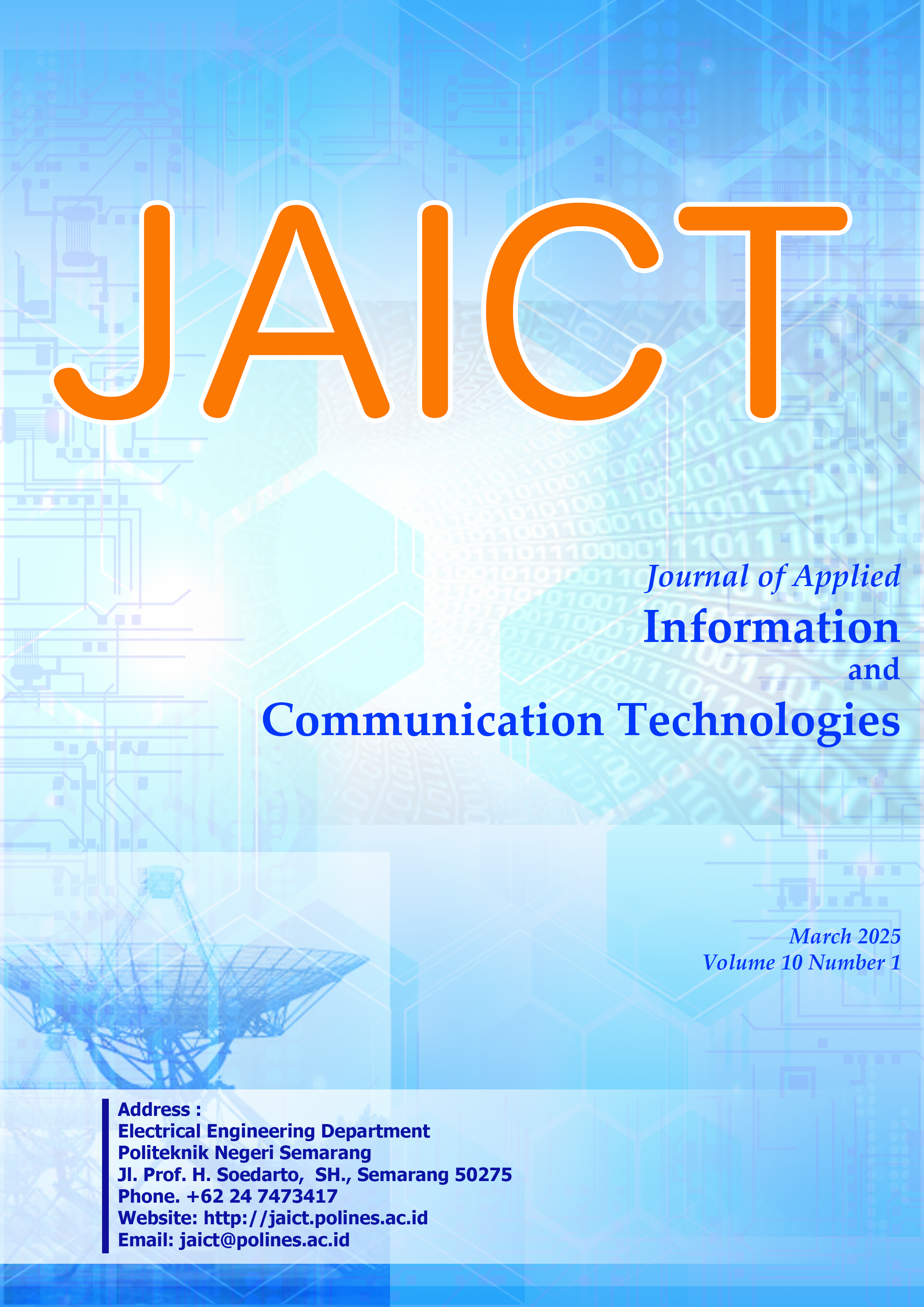Asymmetrical 3x1 Disk Patch Array with Rugby Ball Slot Microstrip Antenna for LoRa IoT B-OSA (Bidirectional Outdoor Sectoral Area) System
DOI:
https://doi.org/10.32497/jaict.v10i1.6593Abstract
Using minimal transmission power, Long-Range Wide Area Networks (LoRaWAN) enable the transmission of data via radio connections from sensors, which may be remote or challenging to reach, to gateways and servers linked to mobile networks for data processing, exchange, or relay, so generating numerous applications for object monitoring and tracking. Nonetheless, owing to its attributes of low data rates for low-power communications, information transmission utilizing LoRa technology is inadequate for rapid real-time data monitoring. Moreover, the narrow bandwidth of LoRa modulation techniques will yield minimal accuracy in localization efforts, as it cannot effectively address multipath issues. This paper proposes a multi-standard 3X1 Antenna Array and a LoRa end device that accurately measures locations using 3X1 technology and transmits this location data to the gateway and Internet of Things Network via LoRa. Measurement outcomes in both indoor and outdoor environments indicate that Antenna Array 3X1 achieves localization accuracy at the sub-meter level, specifically between 10 and 33 cm. Furthermore, Antenna Array 3X1 demonstrates ranges of 124 m in Line-of-Sight (LOS) scenarios and 55 m in Non-Line-of-Sight (NLOS) scenarios, respectively.
Downloads
Published
Issue
Section
License
Copyright (c) 2025 Hutama Arif Bramantyo, Irfan Mujahidin, Akio Kitagawa, Roni Apriantoro, Rizkha Ajeng Rochmatika, Catur Budi Waluyo

This work is licensed under a Creative Commons Attribution 4.0 International License.
Authors who publish with this journal agree to the following terms:Authors retain copyright and grant the journal right of first publication with the work simultaneously licensed under a Creative Commons Attribution License that allows others to share the work with an acknowledgement of the work's authorship and initial publication in this journal.
Authors are able to enter into separate, additional contractual arrangements for the non-exclusive distribution of the journal's published version of the work (e.g., post it to an institutional repository or publish it in a book), with an acknowledgement of its initial publication in this journal.
Authors are permitted and encouraged to post their work online (e.g., in institutional repositories or on their website) prior to and during the submission process, as it can lead to productive exchanges, as well as earlier and greater citation of published work (See The Effect of Open Access).






